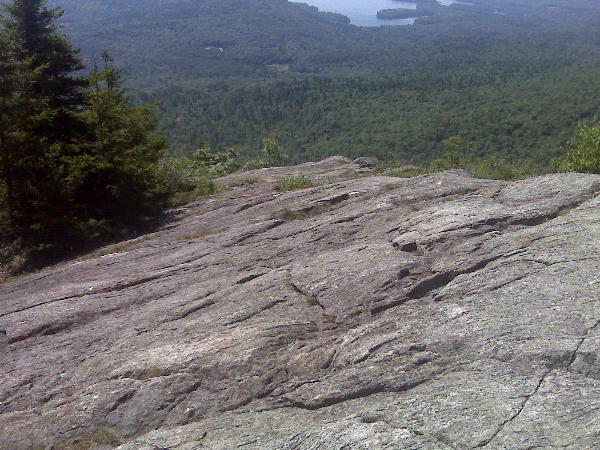
Mount Percival Earth Cache!
The Geology of Mount Percival
A 5-hour scenic loop hike with gorgeous views of Squam Lake and the
surrounding areas. Mt. Percival is the better lunch spot of the two
peaks, with vast granite ledges and beautiful views.
Granite is a common and widely occurring type of intrusive, felsic,
igneous rock. Granite has a medium to coarse texture, occasionally
with some individual crystals larger than the groundmass forming a
rock known as porphyry. Granites can be pink to dark gray or even
black, depending on their chemistry and mineralogy. Outcrops of
granite tend to form tors, and rounded massifs. Granites sometimes
occur in circular depressions surrounded by a range of hills,
formed by the metamorphic aureole or hornfels. Granite is nearly
always massive (lacking internal structures), hard and tough, and
therefore it has gained widespread use as a construction stone. The
average density of granite is 2.75 g/cm3 and its viscosity at
standard temperature and pressure is ~4.5 • 10^19 Pa.s . The word
granite comes from the Latin granum, a grain, in reference to the
coarse-grained structure of such a crystalline rock.
Granite is currently known only on Earth where it forms a major
part of continental crust. Granite often occurs as relatively
small, less than 100 km² stock masses (stocks) and in batholiths
that are often associated with orogenic mountain ranges. Small
dikes of granitic composition called aplites are often associated
with the margins of granitic intrusions. In some locations very
coarse-grained pegmatite masses occur with granite.
Granite has been intruded into the crust of the Earth during all
geologic periods, although much of it is of Precambrian age.
Granitic rock is widely distributed throughout the continental
crust of the Earth and is the most abundant basement rock that
underlies the relatively thin sedimentary veneer of the
continents.
To get credit for this EC, post a photo of you and your GPSr with
granite in background like above example and answer the following
questions.
1. What is your current elevation?
2. Estimate square meters of visible granite atop the mountain from
coordinates.
3. Explain the cracks in the granite floor? Share your
theory.
4. Look at the sign to the north about 30 feet and answer how far
to either point listed on the wooden trail sign.
If your picture is not ready then wait
until you have a photo. Logs with no photo of the actual cacher
logging the find or failure to answer questions will result in a
log deletion. Email me if you had any difficulties or problems, as
I understand that things can happen we don't expect.
Thanks.
I love it when a cache comes together, Strike
Anywhere.
Bring lots of water and be prepared for a strenuous
uphill climb from the Percival Trailhead.